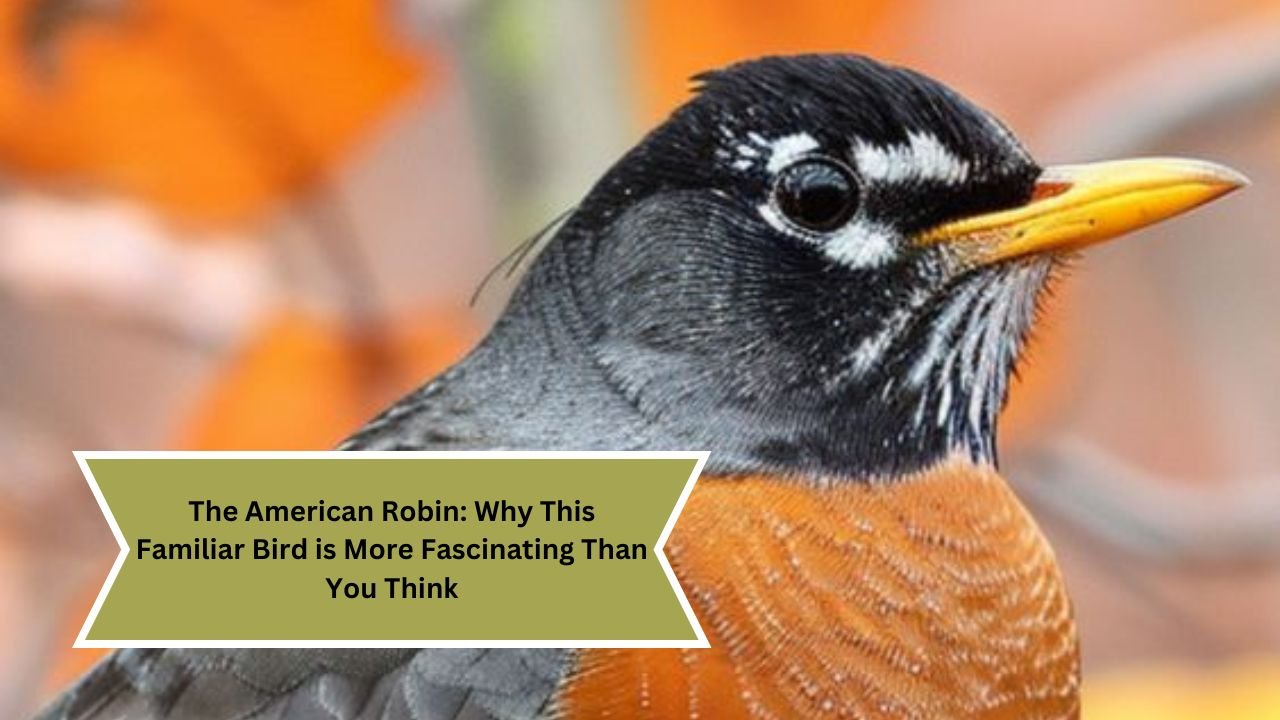The American robin (Turdus migratorius) is a bird that many people recognize instantly. With its bright orange breast and cheerful song, it is often seen as a symbol of spring in North America. While its friendly demeanor and vibrant colors make it a favorite among bird watchers and casual observers alike, there is much more to this common bird than meets the eye. From its unique behavior and adaptability to its role in folklore and ecosystems, the American robin is a truly fascinating creature. In this article, we will delve deeper into the life of the American robin and uncover why this familiar bird deserves more appreciation.
A Snapshot of the American Robin
The American robin is a medium-sized songbird, typically measuring about 9 to 11 inches in length with a wingspan of 12 to 16 inches. Its most distinguishing features include a round body, a distinctive orange-red breast, and a grayish-brown back. Males and females are quite similar in appearance, though males are generally a bit brighter in color. These birds are widespread across North America, from Canada to Mexico, and they are often seen in urban areas, parks, and gardens.
Robins are omnivorous, feeding on a varied diet that includes insects, earthworms, and fruits. In spring and summer, they are known for their melodious songs, which can be heard early in the morning and throughout the day. Their call is often described as a cheerful, whistling tune, which adds to the charm of their presence.
Unique Behavior and Adaptability
One of the most fascinating aspects of the American robin is its behavior, particularly its adaptability to various environments. Robins are highly resourceful and can thrive in both natural and urban settings. They have successfully adjusted to life in cities, where they find ample food and nesting sites. This adaptability allows them to establish populations in diverse habitats, from forests and grasslands to suburban backyards.
Nesting Habits
American robins are also known for their unique nesting habits. They typically build their nests in shrubs, trees, or even on building ledges. The female robin is responsible for constructing the nest, which she creates using grass, twigs, and mud. Interestingly, robin nests are often constructed with great care, and the female will spend time selecting materials that provide both comfort and protection for her eggs.
Once the nest is complete, the female will lay a clutch of three to five eggs, which are usually a striking blue color. This blue hue is believed to serve a dual purpose: it helps regulate the temperature of the eggs and makes them less visible to potential predators. After about two weeks of incubation, the eggs hatch, and both parents take turns feeding the chicks until they fledge.
Migration Patterns
American robins are also remarkable migrators. Many robins migrate south for the winter, traveling thousands of miles to warmer regions in Mexico and the southern United States. Their migration patterns are influenced by food availability and weather conditions, and they typically begin their journey in late summer or early fall. During migration, robins are known to travel in flocks, which helps them navigate and find food along the way.
The Role of the American Robin in Ecosystems
The American robin plays a crucial role in its ecosystem, serving as both a predator and prey. As an omnivore, it helps control insect populations, feeding on pests like caterpillars, beetles, and grasshoppers. By maintaining the balance of these populations, robins contribute to the health of their environment.
Furthermore, robins are important seed dispersers. As they consume fruits such as berries and cherries, they inadvertently help in the propagation of various plant species. When they excrete the seeds, these seeds can germinate and grow into new plants, thus contributing to the growth and diversity of their habitats.
Cultural Significance and Folklore
Throughout history, the American robin has held a special place in various cultures and folklore. For many, the arrival of robins in spring signifies the end of winter and the renewal of life. This bird is often associated with hope and rebirth, making it a popular symbol in literature and art.
In Native American cultures, the robin is often seen as a messenger of change. Stories and legends surrounding the robin highlight its role as a harbinger of spring and a symbol of transformation. In some traditions, robins are believed to carry messages from the spirit world, connecting the earthly realm with the divine.
Conservation Status and Challenges
Despite its commonality, the American robin faces several challenges that can impact its populations. Habitat loss due to urbanization, agricultural expansion, and deforestation can reduce suitable nesting sites and food availability. Additionally, pesticide use can negatively affect the insects and fruits that robins rely on for sustenance.
However, the American robin is currently classified as a species of “Least Concern” by the International Union for Conservation of Nature (IUCN). This classification indicates that, while they face challenges, their populations remain relatively stable. Conservation efforts focused on preserving habitats and reducing pesticide use can further support the survival of this beloved bird.
How to Attract American Robins to Your Yard
If you want to invite American robins into your garden, there are several steps you can take:
- Provide Food: Offer a mix of mealworms, berries, and suet to attract robins. They are especially fond of fruit-bearing plants such as holly, serviceberry, and mulberry.
- Create a Suitable Habitat: Plant native trees and shrubs that offer shelter and nesting opportunities. Avoid using pesticides, as this can harm robins and their food sources.
- Install a Birdbath: Provide a clean water source for drinking and bathing. American robins enjoy splashing around, and a birdbath can be a great addition to your garden.
- Reduce Disturbances: Minimize noise and human activity in areas where robins may be nesting. A peaceful environment encourages robins to feel safe while they raise their young.
Conclusion
The American robin is more than just a familiar sight in gardens and parks; it is a vital component of the North American ecosystem. From its remarkable adaptability and migratory patterns to its role in seed dispersal and pest control, this bird contributes significantly to the health of its environment. Moreover, its cultural significance and connections to human experiences enrich our understanding of the natural world.
As we take the time to appreciate the American robin, we can foster a deeper connection to nature and a greater commitment to preserving the habitats that support these fascinating birds. The next time you hear the cheerful song of a robin, remember that there’s a lot more to this common bird than meets the eye. Whether perched on a tree branch or foraging for food, the American robin continues to inspire and delight those who take the time to observe its beauty and behavior.
| HOME | CLICK HERE |
| AMERICAN ROBIN | CLICK HERE |

